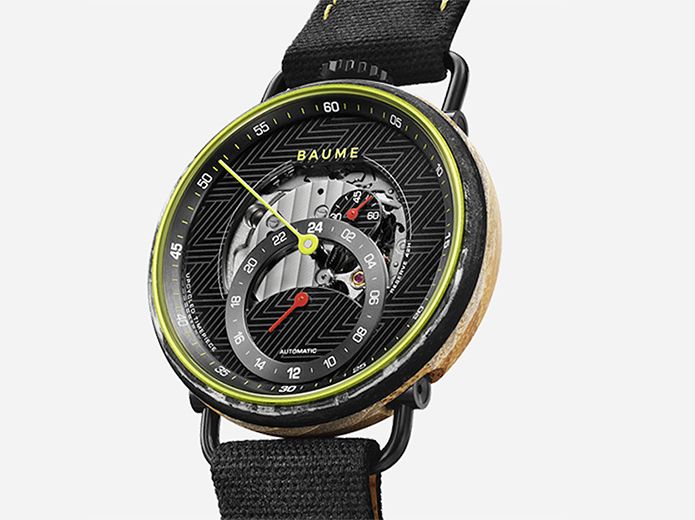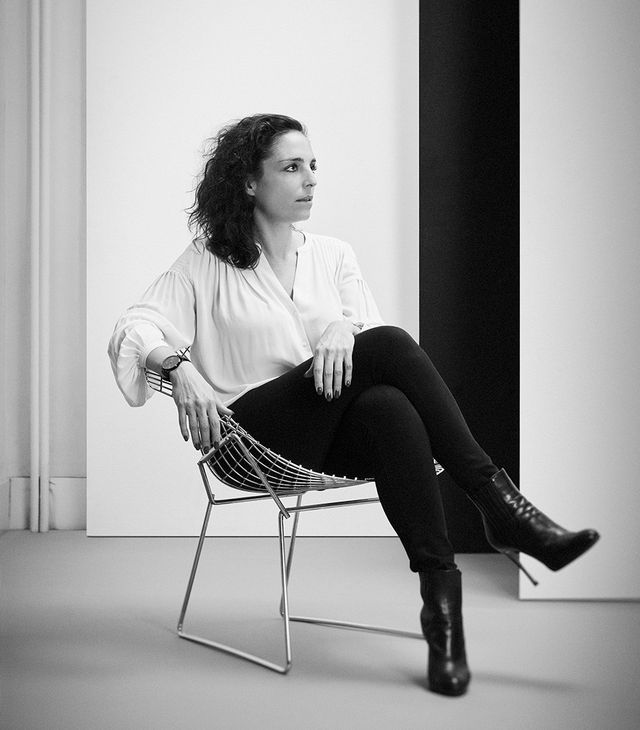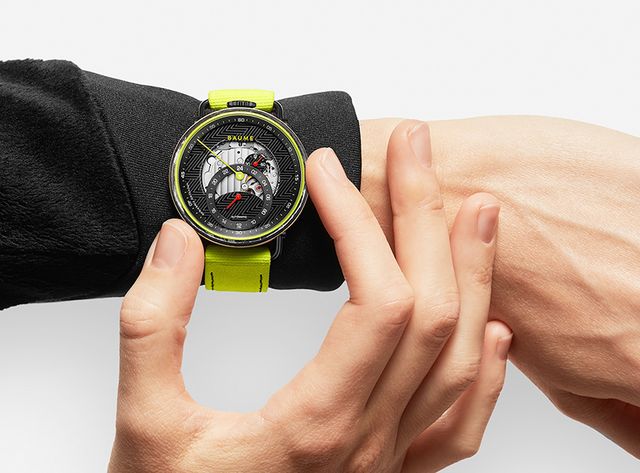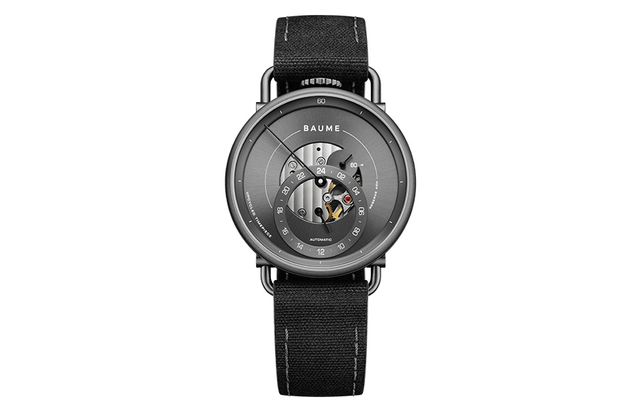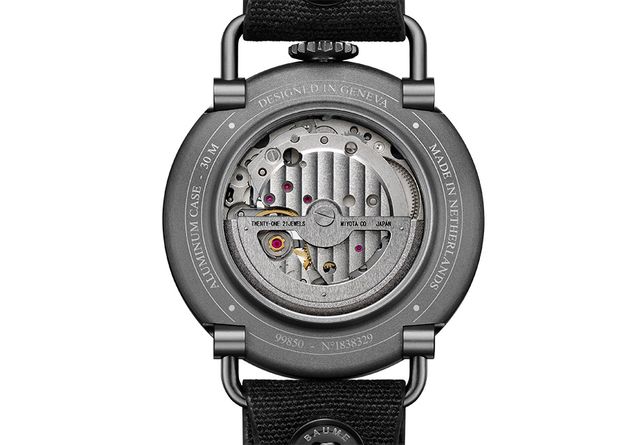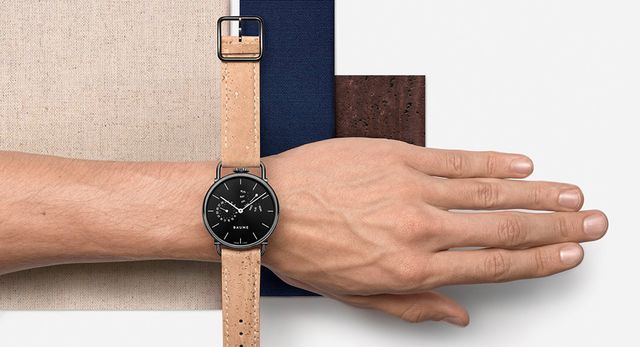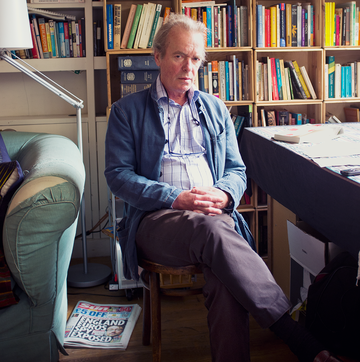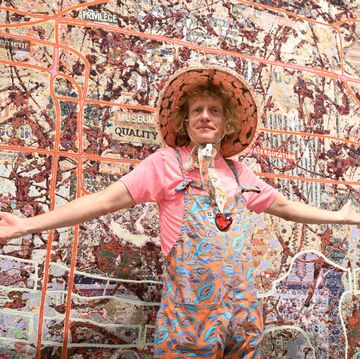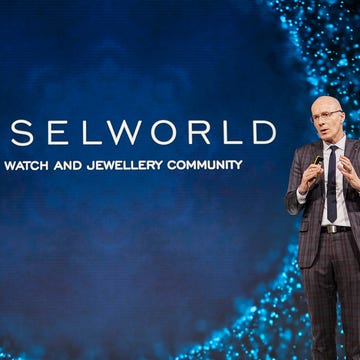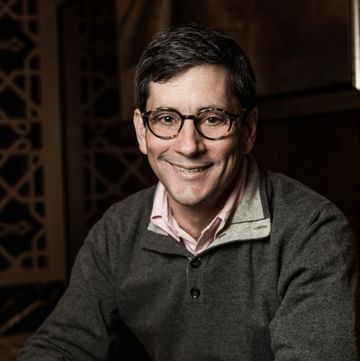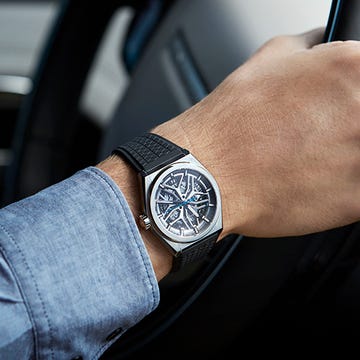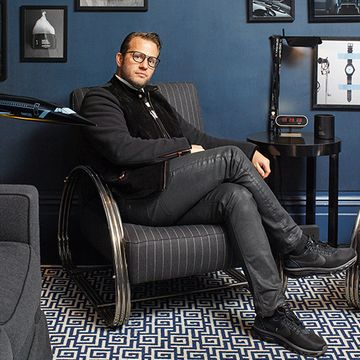Billed as the world’s first sustainable watch brand, Baume launched in early 2018. Owned by the Richemont group, it is somewhat confusingly named. Baume & Mercier CEO Alain Zimmerman was the one who championed the project within Richemont, and Baume is being led by former Baume & Mercier executive Marie Chassot. Legally it is a sub-entity of Baume & Mercier, but from a customer’s point of view shares nothing with the senior brand beyond half its name. It is unlikely to speak to the same people, and nor is it retailed in the same spaces.
But more important than its name is what it stands for. The watches themselves – a mix of automatic and quartz models in a range of PVD-coated cases, priced between £430 and £1,050 with limited potential for customisation – would not necessarily grab our attention in their own right. But coming from one of the largest watch conglomerates, with a stated ambition to eventually change the way all watches are made – and against the backdrop of Swiss watch brands all waking up to the idea of saving the planet – I thought it was worth a second look.
A first visit to Baume’s website throws up a couple of raised eyebrows, however. There is mention of “vegan cotton” straps, and plenty of gold-plated models (described as “golden steel”) that seem to contradict the launch pledges of using no precious metals. And against plenty of on-trend imagery of palm leaves, cool marble surfaces and mountainscapes, a fair amount of eco-waffle that reveals nothing of substance about where and how the watches are made. We learn that there are recycled materials in play in the cases and straps, but the production of movements, dials and other components is still the stuff of metals and chemicals: not sustainable activity. How green are these watches really?
Speaking to Marie Chassot, it’s refreshing to have my cynicism met with honest answers. She admits that “vegan cotton” is just millennial-bait marketing-speak (although it would still be better if it didn’t exist at all) and clarifies that all gold cases are PVD-coated, using “very little gold at all”. Moreover, throughout our conversation the impression is of someone who is aware of the scale of the challenge – developing sustainable structures in the most excessive and indulgent of industries – and who wouldn’t be doing it if she didn’t want to.
“It’s absolutely not easy, especially with the fact that the watchmaking landscape is very busy. And in addition the fact that a lot of young people, do not consider wearing a watch any more. But I’m totally convinced that the mission of the brand will generate the bottom line.” She acknowledges that Baume’s core market is aged between 25 and 35, and says that so far it has been best-received in well developed markets across Europe (in particular France) the US and Japan, before going on to reference author Simon Sinek’s motivational work Start With Why – whose core thesis is that what you’re doing is less important than why you’re doing it. Maybe, just maybe, Baume could be the real deal.
QP: First of all: do you think sustainability is a luxury value?
Marie Chassot: Yes. I think that’s definitely the way it is going. Sustainability is going to become a luxury. And luxury values and codes are now evolving drastically. The notions of recyclability, upcycling, reusing, are going to become the new luxury. I may be a dreamer but if I was not maybe I wouldn’t be so committed to the revolution of Baume.
QP: How has Baume been received? How are things progressing?
MC: Unfortunately I cannot really share figures with you because this is the Richemont rule. But what I can tell you is that so far there is a lot of enthusiasm from the press, from other companies, and other industries. We have to keep in mind that after only eight months we are still a very small baby. We live within a big group where most of the brands are older than 100 years.
So far it’s very encouraging. The visibility of the brand is being built. But we are still in the phase of reaching the early adopters. We will slowly enter into the consolidation phase where we have a big machine behind the scenes in terms of platforms and logistics. And we have to stabilise all that in order to ensure the scalability in the future.
QP: Is it where you expect it to be in terms of sales right now?
MC: Yes, it is, which is really encouraging. We’re selling, and the beauty of e-commerce is that you have all the data and the figures in real time. And you learn at a very early stage where the potential of the brand lies. Our philosophy is very much on experimenting, learning from experiences, and from failures.
QP: So what have you learned so far?
MC: What we’ve learned is something that we realized even before the launch, to tell you the truth – the fact that we thought this brand would be totally e-commerce, digital. And we realized at a quite early stage that this would probably not work and we should include physical distribution, because a large majority of people still need to touch and feel a product and be in contact with the product before buying it, even if it’s digitally.
At the moment of the launch in May in Los Angeles, we had a lot of requests from people saying “oh, well, that is very cool. Where can we see the watches? Where can we touch them?” So we decided to go for a very exclusive and curated physical distribution, focused more on concept stores.
QP: But they’re still doing made to order? Or does that mean you have had to abandon that idea?
MC: No, it’s remained consistent with the philosophy of assembling on demand. But we bring a small assortment of physical watches to these concept stores, for customers to be able to touch and feel. They can buy them, obviously, but really what we see is that this just helps to increase the digital sales.
QP: Where are the watches actually made?
MC: Well, we decided at some point to use movements that were not all Swiss. We have a Japanese movement. And this is the starting point of a lot of decisions: Because at the moment we’ve decided not to be 100% Swiss, it meant that we had to assemble in another country. Initially we were planning on assembling in Switzerland, because we had a facility, we could ensure the quality level and so on. But as soon as we’ve decided to use Japanese movements we understood that according to Swiss law we were not able to assemble in Switzerland and then export outside of Switzerland.
We already had a logistics partner we were working with for our shipping, based in the Netherlands. That’s where we decided to go and create a workshop, in Amsterdam, where Richemont has a quite important office already. It’s within the facility of Richemont in Amsterdam and close to our logistics partner, which makes sense. It’s written on the back of the watch that it’s designed in Geneva and made in the Netherlands.
QP: How many watches are you making?
MC: I can tell you that it’s below 10,000 for now.
QP: So, you’ve got a mixture of Ronda quartz and Miyota automatic movements. And then you are sourcing a lot of reclaimed materials for your cases, your straps and your packaging; recycled aluminium for the cases and PET for your straps. Are those components produced elsewhere and shipped to Amsterdam, then assembled there – is that correct?
MC: Yes, that’s correct. Components are coming from different parts of the world. Of course, there is the question of local [sourcing], which is not very realistic in terms of watchmaking so far. But for now what we do is to order components and rather than having one shipment a month having orders shipped in small bags so they don’t take up much space. But of course, it still has an impact. We have calculated all this because the next step is going to be more localized assembly workshops. One in the US, one in Europe, one in Asia. But this will be effective in terms of impact only when we will have reached a certain amount of watches per year. Then the balance will be reversed but so far it’s less impactful to have one facility and to ship the watches all over the world.
QP: And the components of the watches that are not the movement and are not recycled, such as the dials, the hands, the crown; are they sourced from suppliers that the Richemont group already uses?
MC: Yes that’s correct. We have economies of scale, but also use them for reasons of compliance because they are also quite demanding within the Richemont group. Initially it was safer for us to work with the suppliers that we knew – and also for simple reasons of relationship with the suppliers and also their willingness to work with a small start-up.
QP: What does a Baume watch come packaged in? Can you describe it to me?
MC: We use FSC certified recycled paper. And you can literally recycle the paper box into sheets of paper, and reuse them if you want to. When we started to think about the packaging, we were all amazed by this amount of packaging in the e-commerce business. And the amount of packaging in the watch business. We wanted to reduce it to the smallest possible amount, and we started to talk about this with our logistics partner. They fought so hard, trying to convince us to go for a more conventional packaging because they would not understand. And that’s where we see the mission of Baume: to say ‘okay. Can we question things? And can we stop doing things as we always have done them and just start thinking about how we could do it better?’ And we accepted that even in the beginning we may have some lost packages because it’s much smaller. But we know that it’s the right way to go.
QP: This is an interesting area for the watch world. I understand that you’ve got a lot of ambitions, but as you say, it’s very hard to exert an influence on the supply chains of large companies. How do you hope to exert an influence on someone like Ronda or Miyota?
MC: We work with our suppliers. One of the ideas of Baume is to inspire others, so if one supplier is not totally 100% compliant the idea is to encourage him to get better, use different materials or improve some of the products we use. It’s not 100%. For instance, of course not all of our materials we use are recycled or recyclable. We are starting this journey and we know that we’re not perfect at all but we have committed to some strong things such as moving away from precious material or from animal leather. But we know that we still have a lot of room for improvement, and supply chains are a very complicated thing to tackle. But this is one of our main concerns and our main focus for now.
Of course, it’s much easier with smaller partners or with partners who are already involved or committed into this path [of sustainability]. But in the watch industry I think that we will need Baume to be patient and to be humble. And we will have to wait at some point to have more power and more importance to have a bigger influence on the big actors such as Ronda. But I think that with patience it will come eventually. For me it’s not a debate – it will happen, I’m convinced about that. You are right, it’s not the kind of discussion that we can have today with Ronda, but I know that we will have these kind of discussions with them eventually.
QP: Do you think it’s fair to say that you need some other brands to be coming with you on this journey?
MC: Yes, definitely. That’s why I would never see a competitor sharing the same values as really a competitor. Because really intrinsically we want to make a better world. And this is not a marketing position. It’s really something that we want to achieve. And we don’t have the arrogance to say that we will achieve this alone. It is a drop in the ocean. But it starts with this drop.
QP: With that in mind how do you see this potentially having any sort of transferable knowledge or practices that move into the rest of the Richemont group? I understand that the products are not the same, the price point is not the same. But do you think there are things that you’re doing that in the next five years can change the way that those watches are made as well?
MC: Yes; to be transparent it’s for now kind of a secret ambition of ours. Because, and I think that you can see this in other industries, in other big groups, it starts with one initiative. It can be one small brand like us, and that can become – how do you say? – the head car of the bigger movement. That is definitely the ambition of Baume. But of course, we’re totally aware of the fact that it’s much easier to start from scratch and just reinvent another paradigm of watchmaking. And we are not expecting other, institutional, 200 year old brands to do the same. It has to be true to the DNA and the values of the existing brand.
QP: But DNA has to evolve, doesn’t it?
MC: Yes. What we’ve tried to do is really to face the challenges that we have to face now in 2019. These brands are of course not the same as they were 100 years ago or 200 years ago. And this has to be taken into account and ultimately, I think it’s the responsibility of not only individuals but also brands and governments and everyone. It has to be included into their strategy.
